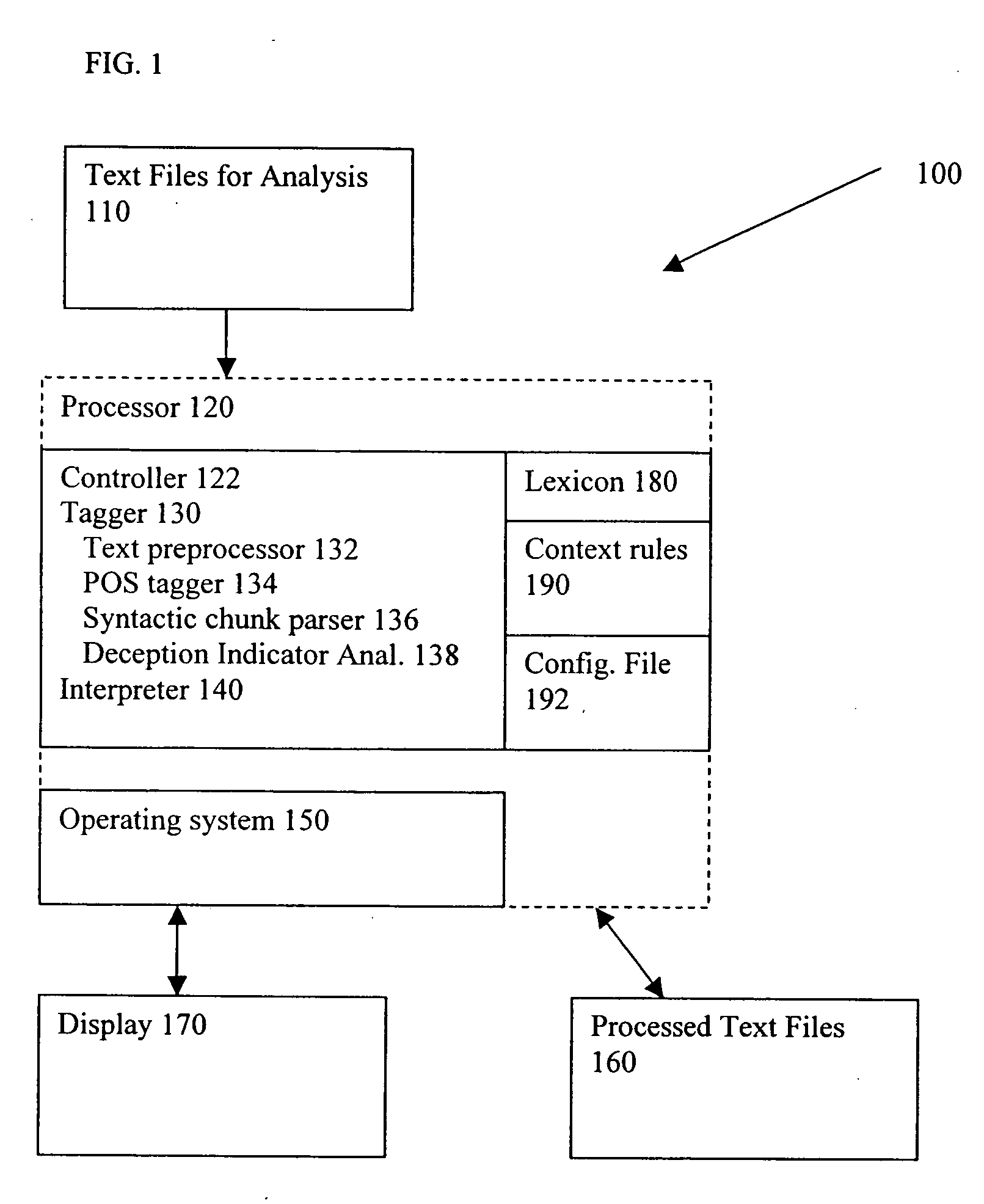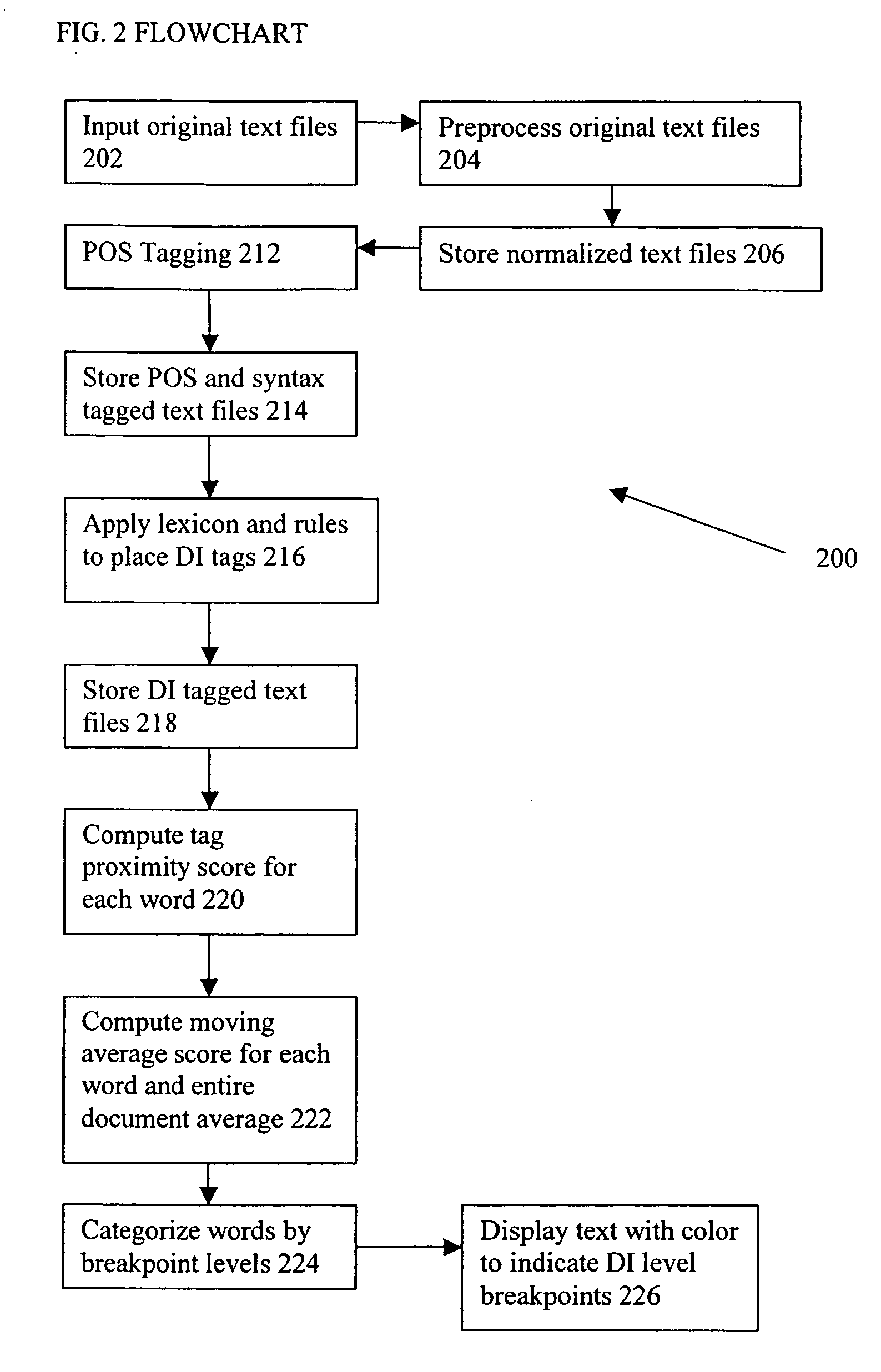Method and system for the automatic recognition of deceptive language
a technology of automatic recognition and deception, applied in the field of automatic recognition of deception language, can solve the problems of lack of formal detail to be automated, no proposed approach bases its claim on the examination of large text or speech corpora, and the technology is not appropriate for freely generated speech
- Summary
- Abstract
- Description
- Claims
- Application Information
AI Technical Summary
Benefits of technology
Problems solved by technology
Method used
Image
Examples
Embodiment Construction
I. Overview
[0016] A core notion of the method is that deceptive statements incorporate linguistic attributes that are different from those of non-deceptive statements. It is possible to represent these attributes formally as a method of linguistic analysis that can be verified by empirical tests.
[0017] The method begins with certain widely accepted techniques of corpus linguistics and automated text analysis. The deception detection component is based on a corpus of “real world” texts, for example, statements and depositions from court proceedings and law enforcement sources which contain propositions that can be verified by external evidence. Linguistic analysis is accomplished by a combination of statistical methods and formal linguistic rules. A novel user interface interprets results of the analysis in a fashion that can be understood by a user with no specialized training.
[0018] A method in accordance with the present invention is implemented as an automated system that incor...
PUM
 Login to View More
Login to View More Abstract
Description
Claims
Application Information
 Login to View More
Login to View More - R&D
- Intellectual Property
- Life Sciences
- Materials
- Tech Scout
- Unparalleled Data Quality
- Higher Quality Content
- 60% Fewer Hallucinations
Browse by: Latest US Patents, China's latest patents, Technical Efficacy Thesaurus, Application Domain, Technology Topic, Popular Technical Reports.
© 2025 PatSnap. All rights reserved.Legal|Privacy policy|Modern Slavery Act Transparency Statement|Sitemap|About US| Contact US: help@patsnap.com



